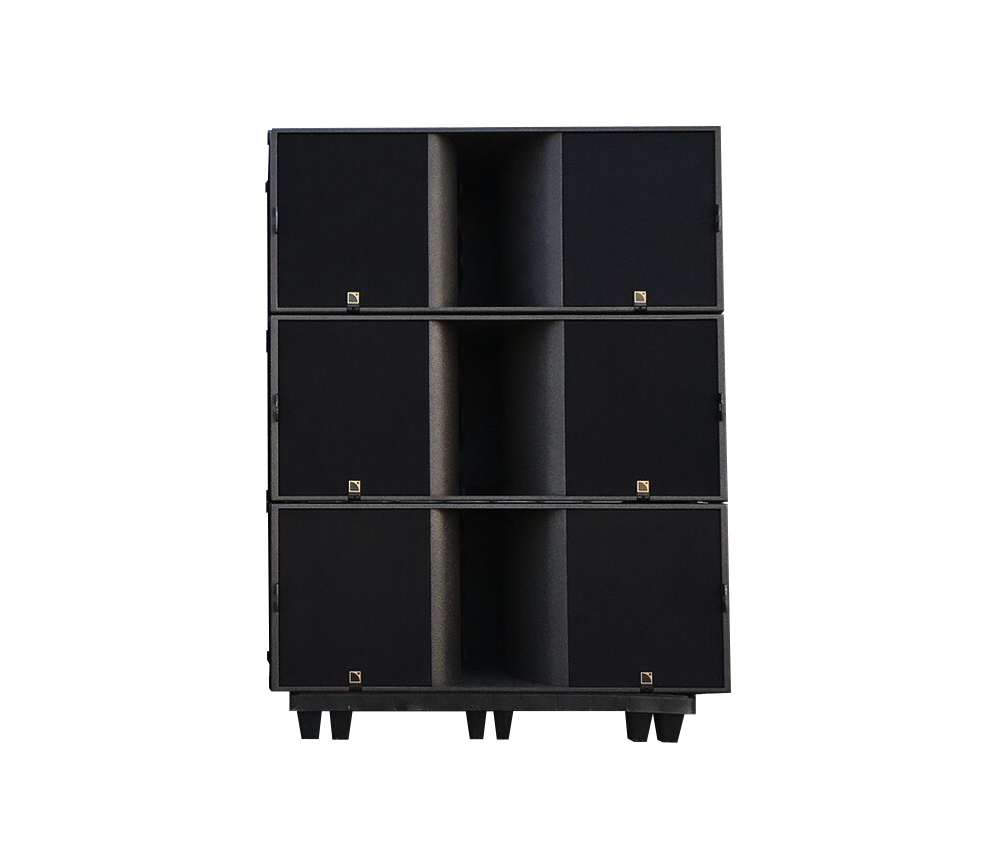Essential Guide to AV System Design: Components & Best Practices
Jan 08, 2025
Audio-visual (AV) systems play a vital role in the success of events, from conferences to festivals, by creating engaging and impactful experiences for attendees. A well-executed audio-visual system design is essential to ensure all components, from sound and lighting to visual displays, work seamlessly together.
This requires a solid understanding of the equipment and mastery of the best practices for optimizing performance and adapting to the unique needs of each event. Join AV Vietnam to explore the key components and expert audio-visual system design tips that elevate the quality and success of any event.

Having a professionally designed AV system will attract a large audience
What is an audio-visual system design?
Audio-visual (AV) system design involves planning, integrating, and optimizing AV equipment to create a seamless and impactful user experience. This involves selecting the right components, such as sound systems, lighting, displays, and control devices, and ensuring they work together efficiently.
AV system design is essential for events, businesses, and other applications, as it enhances communication, engagement, and the overall atmosphere. A well-designed AV system considers the specific needs of the space and audience, delivering high-quality performance tailored to the event's goals.
The importance of AV system design
Audio-visual system design is essential for enhancing communication, boosting productivity, and creating impactful experiences across various industries. In corporate settings, a well-designed AV system design enables seamless presentations and video conferencing, allowing teams to collaborate efficiently, regardless of location.
Similarly, in education, tools like smartboards, projectors, and sound systems foster interactive and engaging learning environments, catering to diverse learning styles and boosting student engagement.
In the entertainment industry, AV system design is the backbone of theaters, concert halls, and cinemas, delivering high-quality sound and visuals for immersive audience experiences. Whether in a boardroom, classroom, or performance venue, audio-visual system design ensures optimal functionality and professional results, making it indispensable in today’s connected world.

Whether it is a conference, seminar, or music event, the sound and lighting system always plays a very important role.
>> Read more: A Guide to Audio/Visual Step Up for a Successful Music Festival
Essential components of an AV system
A well-designed AV system relies on the seamless integration of key components to deliver high-quality performance and meet the specific needs of various applications. These components include audio, visual, control systems, and connectivity, each playing a vital role in ensuring the system's efficiency and functionality.
Audio components
Audio is a fundamental element of any AV system, responsible for delivering clear and impactful sound. Key components include:
-
Microphones: Capture sound and convert it into electrical signals. Condenser microphones are ideal for studio settings due to their sensitivity, while dynamic microphones are better suited for live sound environments.
-
Speakers: Convert electrical signals back into sound, ensuring consistent audio delivery across the venue.
-
Amplifiers: Boost audio signals to drive speakers effectively, ensuring optimal sound levels.
-
Audio Processors: Enhance and modify audio signals for improved clarity and quality.
Selecting the right audio equipment and optimizing placement are crucial for achieving balanced and distortion-free sound, whether for conferences, classrooms, or entertainment venues.

Sound is one of the most important parts of the system
Visual components
Visual components are essential for capturing attention and delivering engaging content. Key elements include:
-
Displays: Monitors, TVs, or LED screens that showcase visual content.
-
Projectors and Screens: Used in large venues to project and display images with high resolution. Laser projectors, though costlier, provide superior brightness and durability, making them a preferred choice for large-scale events.
-
Video Processors: Enhance and manipulate video signals to ensure optimal display quality.
Choosing the right visual equipment depends on the size of the venue and the type of event, with a focus on delivering vibrant and accurate visuals.

Visual components that engage the audience with just one look
Control systems
Control systems are the brain of the AV setup, allowing for easy operation and synchronization of all components. They include:
-
Remote Controls: Simple devices for managing individual components.
-
Touch Panels: Advanced interfaces that allow for centralized and intuitive control.
-
Automation Systems: Enable pre-programmed settings and integration with smart technologies, streamlining operations and reducing manual intervention.
A well-designed control system simplifies the user experience and ensures seamless operation during events.
Connectivity
Connectivity binds the AV system together, ensuring all components work in harmony. It includes:
-
Cables and Connectors: High-quality HDMI, XLR, and Ethernet cables ensure reliable wired connections between devices.
-
Wireless Solutions: Bluetooth and Wi-Fi provide flexibility, allowing devices to connect without physical cables.
Opting for high-quality cables and robust wireless solutions minimizes disruptions and ensures smooth communication between components, supporting a flawless AV experience.
Steps to design an AV system
Designing an AV system involves careful planning and a systematic approach to ensure optimal performance and functionality. Below are the key steps to create a well-designed AV system that meets user needs and expectations.

Music event images organized by AV Vietnam
Identify needs and objectives
The first step in AV system design is understanding the specific purpose and requirements of the system.
-
Define the Purpose: Determine the primary use of the AV system, such as for presentations, entertainment, communication, or hybrid events.
-
Assess Requirements: Consider factors like room size, audience capacity, type of content (audio, video, or both), and the desired level of functionality.
This step ensures that the system is tailored to the unique demands of the space and its users.
Budget planning
A well-planned budget is critical for designing an AV system that balances quality and cost-effectiveness.
-
Estimate Costs: Research the prices of essential components, including audio, visual, and control systems.
-
Find Cost-Effective Options: Explore deals, bundles, or reputable second-hand equipment to save costs without compromising on quality.
-
Prioritize Components: Focus on must-have components first and consider additional features as the budget allows.
It’s also important to allocate funds for future upgrades and maintenance to ensure the system remains functional and up-to-date with evolving technology.

Music event images organized by AV Vietnam
Plan the layout
A thoughtful layout is crucial for maximizing the performance of the AV system.
-
Physical Placement: Strategically plan the positioning of speakers, microphones, displays, and other components to optimize sound and visuals.
-
Integration: Ensure all components are compatible and work together seamlessly for a cohesive system.
Using AV design software to create a virtual layout before installation helps visualize the setup, identify potential issues, and refine the design for the best results. By following these steps, you can design an AV system that is efficient, reliable, and tailored to your specific needs.
How to install and set up an AV system
Proper audio-visual installation and setup are critical for ensuring the optimal functionality of an AV system. From preparing the site to final testing, a systematic approach helps achieve seamless integration and performance.
Prepare for installation
Before starting the installation, several preparatory steps are essential:
-
Site preparation: Ensure the installation site is ready, with proper electrical infrastructure, cable pathways, and mounting spaces in place.
-
Safety and compliance: Adhere to safety standards and regulations to avoid legal or operational issues during and after the installation.
-
Gather tools and equipment: Have all necessary tools, cables, connectors, and mounting hardware prepared for a smooth installation process.
Taking these steps minimizes delays and sets the foundation for a successful setup.

Setting up a solid, professional sound and lighting system requires elaborate personnel
Install audio components
-
Positioning and placement: Place speakers and microphones strategically for optimal sound distribution while minimizing feedback and distortion. Use mounts or stands for stability and proper alignment.
-
Connection and Testing: Connect microphones to mixers and amplifiers to speakers using high-quality cables. Test each audio component individually to ensure it functions properly.
-
Calibration: Adjust sound levels and settings for balanced audio throughout the venue.
Set up visual components
-
Mounting displays and projectors: Securely mount monitors, LED screens, or projectors in their designated locations. Ensure displays are aligned correctly with screens for clear and accurate visuals.
-
Connection and adjustment: Use reliable cables such as HDMI or DisplayPort to link visual sources to displays. Optimize brightness, contrast, and resolution settings for the best image quality.
Integrate control systems
-
Installation: Set up control panels, touch screens, or automation systems in easily accessible locations.
-
Configuration: Connect and program control systems to manage all components, including audio, visual, and lighting systems. Create preset configurations to streamline operation.
Ensure proper connectivity
-
Wired and wireless integration: Connect all components using reliable cables or wireless solutions like Wi-Fi or Bluetooth. Ensure stable communication between devices.
-
Test signal flow: Verify that all audio, visual, and control systems communicate effectively, with no interruptions or delays.
Conduct post-installation testing
After installation, thorough testing ensures the system performs as intended:
-
Individual component testing: Test audio and visual components separately to identify potential issues early.
-
System-wide testing: Run all components together to check for seamless integration and troubleshoot any compatibility issues.
-
Final adjustments: Fine-tune audio, visual, and control settings for optimal performance.
By following these steps and paying close attention to site preparation, safety, and system testing, you can ensure a smooth installation process and a reliable AV system ready for use.
Maintenance and upgrades
Regular maintenance and timely upgrades are essential for extending the lifespan of your AV system and ensuring consistent, high-quality performance. A well-maintained system not only minimizes downtime but also adapts to evolving technological demands.
Hình 8: AV Vietnam always maintains and upgrades equipment to ensure the event is safe and successful.
H3: Routine maintenance
Consistent maintenance helps prevent issues and ensures all components operate smoothly.
-
Cleaning components: Regularly clean audio and visual equipment, such as microphones, speakers, displays, and projectors, to prevent dust buildup that can impact performance or cause damage.
-
Software and firmware updates: Keep the software and firmware of control systems, processors, and connected devices up to date to enhance functionality, security, and compatibility.
-
Performance checks: Periodically test all components to identify potential problems and ensure seamless operation.
A proactive maintenance routine reduces the likelihood of unexpected failures and extends the system’s usability.
Planning upgrades
As technology advances, upgrading your AV system ensures it stays relevant and continues to meet user needs.
-
Identify when to upgrade: Evaluate system performance to determine if components are outdated or no longer sufficient for current requirements.
-
Adopt new technologies: Stay informed about advancements in AV technology, such as 4K displays, smart automation, and wireless connectivity, and integrate them as needed to enhance functionality and user experience.
-
Opt for modular systems: Modular AV systems allow for easier upgrades and expansions, making it more convenient to add new features or replace outdated components compared to fully integrated setups.
By combining routine maintenance with a strategic upgrade plan, you can ensure your AV system remains reliable, efficient, and aligned with modern demands.
Best Practices for AV System Design
To create an efficient and long-lasting AV system, following best practices is essential. A well-designed system prioritizes ease of use, scalability, and adaptability to future technologies, ensuring it meets both current and evolving needs.

Ensure your event runs smoothly with methods from AV Vietnam
Ensure user-friendly operation
An effective AV system should be simple for all users to operate, regardless of their technical expertise.
-
Intuitive Design: Develop a user interface that is straightforward to navigate, such as touch panels or simplified control apps.
-
Provide Training: Offer training sessions and user manuals to help users understand the system's functionalities and operate it confidently.
A user-friendly AV system minimizes confusion and allows smooth operation in any setting.
Focus on scalability and future trends
Planning for future needs ensures your AV system remains relevant and cost-effective over time:
-
Scalable design: Select modular components that allow for easy upgrades or expansion, reducing the need for costly system overhauls.
-
Adopt emerging technologies: Stay updated on trends like wireless connectivity, AI-driven automation, and high-resolution displays (e.g., 4K or 8K).
By incorporating scalability and future-proofing into the design, you can maximize the system’s adaptability and long-term value.
Conclusion
Designing an effective AV system involves understanding its essential components and applying best practices to ensure optimal performance and future scalability. A well-designed AV system can elevate communication, engagement, and user experience in any setting.
At AV Vietnam, we provide professional AV system design and setup solutions tailored to your specific needs. Contact us today at (+84) 939 311 911 or (+84) 918 640 988 to create seamless, high-performing AV systems that take your events to the next level.






